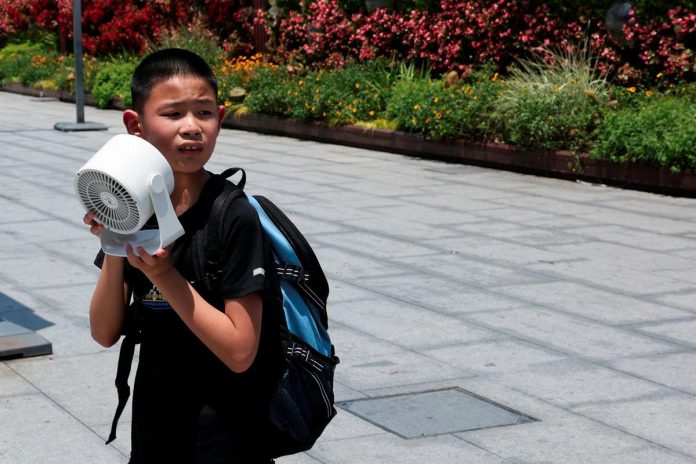SHANGHAI/BEIJING: Sweltering heat enveloped China’s eastern seaboard on Friday, as a high-pressure system settled over the country’s most populous region, baking key agricultural and manufacturing hubs along the Yangtze River and raising fears of droughts and economic losses.
Large swathes of China’s economic heartland are set to roast in temperatures of 37-39 degrees Celsius (99-102 degrees Fahrenheit) over the coming week. Forecasters are warning that parts of Anhui and Zhejiang provinces, as well as the more central provinces of Hubei and Henan, could top 40 C.
The subtropical high causing the heat has arrived unusually early this year.
China’s “Sanfu Season” – an agricultural marker thought to have been in use for more than two millennia – typically begins in mid-July and lasts through late August, sending people sheltering from intense summer heat.
“It’s getting hot earlier and earlier now,“ said Tao Sijia, a 30-year-old Shanghai resident. “I prefer the cooler weather in my childhood. The summers in my memory were cool. Now, it’s pretty hot.”
Extreme heat, which meteorologists link to climate change, has emerged as a major challenge for Chinese policymakers. As well as scorching croplands and eroding farm incomes, higher temperatures can affect manufacturing hubs and disrupt operations in key port cities, and strain already overburdened healthcare systems.
“Heatwaves in China bring drought risks, and this could be a concern in southwestern China this year,“ said Chim Lee, a senior analyst at the Economist Intelligence Unit specialising in energy and climate change. “Sichuan is already experiencing lower-than-average rainfall, and this will have ramifications for the region’s hydropower output, which in turn will affect its power exports to eastern China.”
However, China does not appear to be heading for a record-breaking summer, Lee said, noting that recent high temperatures in northern China and the number of hot days so far remain lower than during the same period in 2023.
Still, authorities across eastern and central China issued warnings about the dangers, urging workers to take precautions as the combination of extreme heat and humidity during commutes created a heightened risk of heat stroke.
“I feel very hot after walking out of the office,“ said Iris Chen, a 21-year-old student. “It’s just the beginning of July, so it’s probably not the highest temperature yet.”
WORLD’S LARGEST LEGOLAND
The world’s largest Legoland is set to open in Shanghai on Saturday, but the searing heat shows little sign of curbing enthusiasm for the city’s newest attraction.
Online searches for the theme park increased five-fold in June compared with May, while hotel bookings in the surrounding area increased by an annual 250%, data from Qunar, China’s second-largest travel agency, showed.
In 2022, China was hit by the worst heatwaves since 1961, with many parts of the country enduring a 79-day hot spell from mid-June to late August. No official death toll was disclosed and China does not give a tally of heat-related deaths, although domestic media occasionally report fatalities citing local authorities.
In a 2023 report published in the medical journal The Lancet, heatwave-related mortality in the world’s second-largest economy was estimated at 50,900 deaths in 2022, doubling from 2021.
China is not alone in having to contend with the potentially catastrophic consequences of extreme heat. Earlier this week, Greek firefighters battled wildfires on the island of Crete and near Athens, as an early summer heatwave linked to the deaths of at least eight people sweeps across Europe.
California has also seen conflagrations erupt well outside the traditional wildfire season in recent years, displacing tens of thousands of people.
Compounding the challenge facing Chinese officials, while the east bakes, other parts of the country are struggling with torrential rain, conditions that analysts also attribute to climate change.
The national meteorological centre forecast more torrential rain across parts of north- and southwest China on Friday and Saturday, with videos circulating on Chinese social media showing residents canoeing through flooded streets in the city of Chengdu. – Reuters








